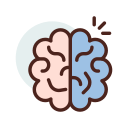Filter by

Cyberpragmatics : internet-mediated communication in context
Cyberpragmatics is an analysis of Internet-mediated communication from the perspective of cognitive pragmatics. It addresses a whole range of interactions that can be found on the Net: the web page, chat rooms, instant messaging, social networking sites, 3D virtual worlds, blogs, videoconference, e-mail, Twitter, etc. Of special interest is the role of intentions and the quality of interpretati…
- Edition
- -
- ISBN/ISSN
- 9789027256195
- Collation
- xic, 353p. : ill.
- Series Title
- -
- Call Number
- 401.450285 YUS c

Culinary linguistics : the chef's special
Language and food are universal to humankind. Language accomplishes more than a pure exchange of information, and food caters for more than mere subsistence. Both represent crucial sites for socialization, identity construction, and the everyday fabrication and perception of the world as a meaningful, orderly place. This volume contains an introduction to the study of food and an extensive over…
- Edition
- -
- ISBN/ISSN
- 9789027202932
- Collation
- xvi, 347p. : ill.
- Series Title
- -
- Call Number
- 420.147 CUL c

Constructicography : constructicon development across languages
In constructionist theory, a constructicon is an inventory of constructions making up the full set of linguistic units in a language. In applied practice, it is a set of construction descriptions – a “dictionary of constructions”. The development of constructicons in the latter sense typically means combining principles of both construction grammar and lexicography, and is probably best c…
- Edition
- -
- ISBN/ISSN
- 9789027263865
- Collation
- viii, 313p. : ill.
- Series Title
- -
- Call Number
- 415.01836 CON c

Connecting grammaticalisation
This monograph presents a view on grammaticalisation radically different from standard views centering around the cline of grammaticality. Grammar is seen as a complex sign system, and, as a consequence, grammatical change always comprises semantic change. What unites morphology, word order, constructional syntax and other grammatical subsystems is their paradigmatic organisation. The tradition…
- Edition
- -
- ISBN/ISSN
- 9789027284136
- Collation
- xiii, 347p. : ill.
- Series Title
- -
- Call Number
- 415 NOR c

Cognition, language and aging
Age-related changes in cognitive and language functions have been extensively researched over the past half-century. The older adult represents a unique population for studying cognition and language because of the many challenges that are presented with investigating this population, including individual differences in education, life experiences, health issues, social identity, as well as gen…
- Edition
- -
- ISBN/ISSN
- 9789027267313
- Collation
- viii, 248p. : ill.
- Series Title
- -
- Call Number
- 408.46 COG c

English language learning and technology : lectures on applied linguistics in…
This book explores implications for applied linguistics of recent developments in technologies used in second language teaching and assessment, language analysis, and language use. Focusing primarily on English language learning, the book identifies significant areas of interplay between technology and applied linguistics, and it explores current perspectives on perennial questions such as how …
- Edition
- -
- ISBN/ISSN
- 9789027217042
- Collation
- xvi, 213p. : ill.
- Series Title
- -
- Call Number
- 428.0071 CHA e

Bridging transcultural divides : Asian languages and cultures in global hight…
This volume presents the diverse approaches and achievements of scholars of Asian cultures and languages in today’s global academy. Recent vast increases in student numbers and ethnic diversity have created pressing challenges for a higher education which engages with contemporary concerns for Asian societies as well as for Asian students involved in Western education. This collection of scho…
- Edition
- -
- ISBN/ISSN
- 9781922064318
- Collation
- xvi, 286p. : ill.
- Series Title
- -
- Call Number
- 495 BRI b

In this together : teachers' experiences with transnational, telecollaborativ…
This book provides a nexus between research and practice through teachers’ narratives of their experiences with telecollaboration. The book begins with a chapter outlining the pedagogical and theoretical underpinnings of telecollaboration (also known as Virtual Exchange), followed by eight chapters that explain telecollaborative project design, materials and activities as well as frank discus…
- Edition
- -
- ISBN/ISSN
- 9783034335010
- Collation
- 230p. : ill.
- Series Title
- -
- Call Number
- 418.00785678 IN i

Modern languages across the curriculum
This book sets out the agenda for the future of modern language teaching in schools. It aims to look beyond the dominant methods of second language teaching to a new approach emphasising the integration of language learning within the wider curriculum. Through research and case studies from the UK, France, Spain, Italy, Germany, Belgium and Finland, the book shows how teachers and policy makers…
- Edition
- -
- ISBN/ISSN
- 9781136850875
- Collation
- x, 222p. : ill.
- Series Title
- -
- Call Number
- 418.0071 MOD m

Teenagers, literacy and school : researching in multilingual contexts
This unique and timely book follows the experiences of four Arabic teenagers, their families and their community, focusing on the role of literacy in their daily lives and the differences between home and school. The author looks at the conflict between expectations and practices at school and in the home, arguing that problems are inevitable where class and cultural differences exist. Emerging…
- Edition
- -
- ISBN/ISSN
- 9780203015438
- Collation
- xvi, 246p. : ill.
- Series Title
- -
- Call Number
- 428.00712 CRU t
 Computer Science, Information & General Works
Computer Science, Information & General Works  Philosophy & Psychology
Philosophy & Psychology  Religion
Religion  Social Sciences
Social Sciences  Language
Language  Pure Science
Pure Science  Applied Sciences
Applied Sciences  Art & Recreation
Art & Recreation  Literature
Literature  History & Geography
History & Geography